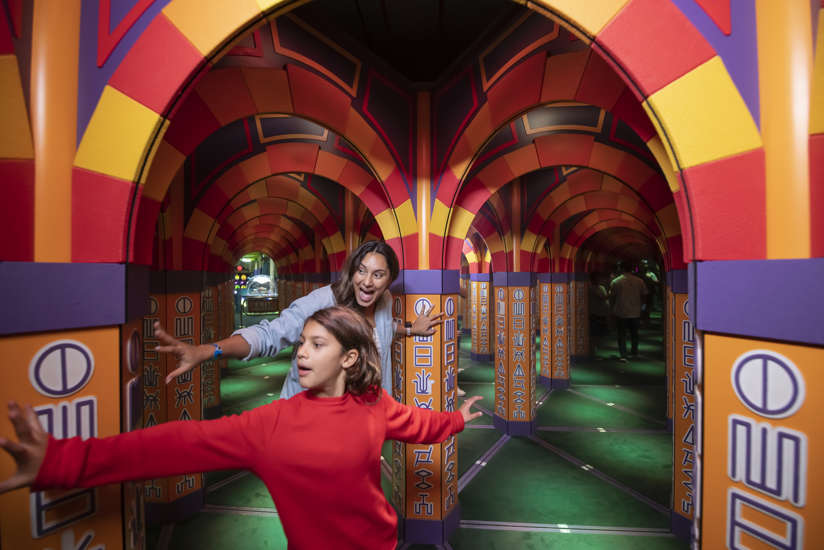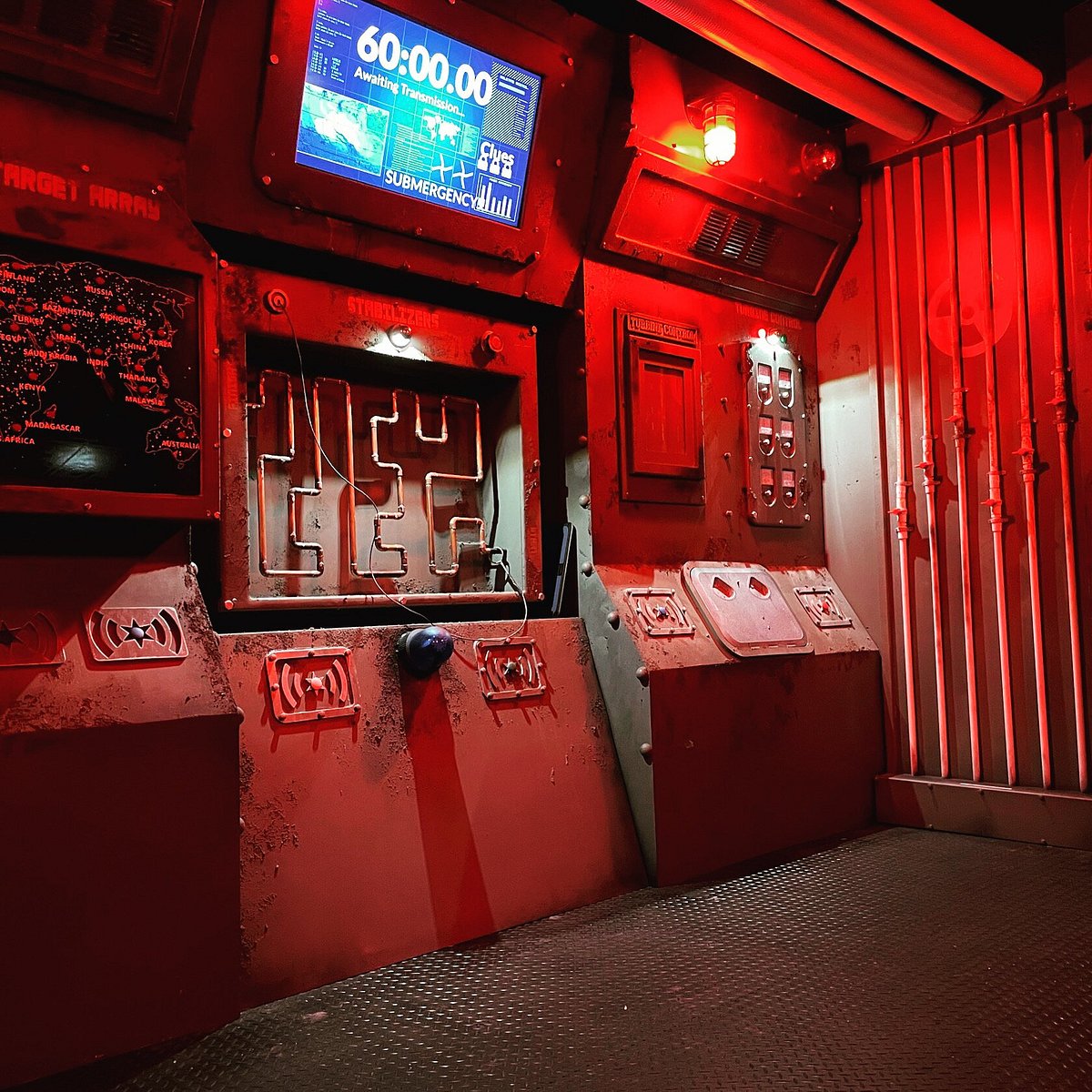From Beginners to Professionals: Discover Your Perfect Escape Room Seattle WA
From Beginners to Professionals: Discover Your Perfect Escape Room Seattle WA
Blog Article
Challenge Your Mind With Our Intriguing Escape Room Puzzles and Clues
Beginning on an escape area adventure supplies a diverse experience that mixes cognitive difficulties with immersive narration. Each room, meticulously crafted with one-of-a-kind themes, attracts participants into a globe where reasoning, observation, and physical challenges merge.
The Art of Challenge Layout
The art of challenge layout in escape spaces is a meticulous and imaginative procedure that calls for a deep understanding of both cognitive and emotional involvement. Crafting an effective puzzle includes stabilizing complexity with solvability, making sure that individuals stay tested yet not bewildered. This equilibrium is important, as it cultivates a sense of success and promotes ongoing involvement.
Problem designers must think about numerous cognitive abilities, such as pattern acknowledgment, deductive reasoning, and spatial recognition. These components should be interwoven effortlessly within the narrative of the escape room, improving the immersive experience. Psychological engagement is just as vital; puzzles ought to evoke interest, excitement, and periodic frustration, motivating participants to stand firm and eventually prosper.
Focus to detail is paramount. Every idea, prop, and mechanism should be carefully created and tested to guarantee performance and coherence within the storyline. Designers frequently iterate on their developments, integrating feedback from test teams to improve trouble degrees and get rid of uncertainties.

Types of Escape Room Difficulties
Recognizing the intricacies of puzzle design normally results in an expedition of the varied kinds of obstacles run into in getaway areas. These obstacles can be generally classified into physical problems, reasoning puzzles, and observational puzzles, each offering distinct forms of interaction and cognitive excitement.
Physical challenges need participants to communicate with their atmosphere, frequently involving jobs such as constructing items, adjusting devices, or uncovering hidden compartments. These obstacles involve tactile senses and spatial reasoning, urging synergy and hands-on analytical.
Logic problems, on the various other hand, need analytical thinking and pattern acknowledgment. Participants could be charged with translating ciphers, resolving mathematical problems, or finding connections between apparently unconnected hints - best escape room. These problems are developed to test the gamers' deductive reasoning and intellectual expertise
Empirical problems count on keen attention to information. Players need to scrutinize their environments to determine refined tips, inconsistencies, or hidden messages. These difficulties commonly necessitate an eagle eye and a capability to regard links that others could ignore.
Strategies for Success
Attaining success in getaway rooms requires a thoughtful blend of technique and cooperation. Team effort is paramount; gamers need to leverage their cumulative strengths to address complicated challenges efficiently. Dividing tasks according to specific skills can simplify the process-- those with a flair for pattern recognition can manage aesthetic puzzles, while sensible thinkers deal with series and puzzles.
Effective communication is another foundation of success. Sharing explorations quickly protects against duplicated efforts and ensures every person remains on the very same web page. Using a central location to put located things can help track development and stay clear of missing essential clues.
Time management is similarly vital. Assign a details quantity of time per puzzle, avoiding prolonged emphasis on any kind of single challenge. Looking for or changing problems assistance from colleagues can give fresh perspectives. if progression stalls.
It's additionally helpful to acquaint oneself with typical getaway area motifs and problem kinds in advance. Comprehending prospective challenge layouts, such as ciphers or lock mixes, can speed up problem-solving.
Lastly, maintaining a favorable and composed perspective under stress can substantially affect performance. Stress can cloud judgment, so preserving tranquil guarantees clear thinking and reliable partnership, resulting in a higher probability of effectively leaving.

Benefits of Escape Rooms
Participating in getaway areas offers a wide range of benefits that prolong beyond simple enjoyment. These immersive experiences act as a durable system for creating crucial thinking and problem-solving abilities. Individuals are called for to evaluate ideas, determine patterns, and design options under time restrictions, promoting imagination and cognitive versatility.
In addition, retreat areas are an effective device for improving teamwork and communication. The collective nature of these activities necessitates reliable interaction and sychronisation among employee. This environment encourages individuals to verbalize their thoughts clearly, pay attention proactively, and work synergistically towards an usual objective, thus enhancing social abilities.
Moreover, escape rooms provide an excellent method for stress and anxiety relief and psychological renewal. The gripping nature of the obstacles enables individuals to divert their focus from everyday stressors, advertising a sense of achievement and health upon addressing the puzzles. This can lead to improved mental health and enhanced performance in other locations of life.
Lastly, these experiences typically need creativity and ingenuity, which can translate right into innovative problem-solving capabilities in check that specialist settings. By involving in getaway areas, individuals can sharpen a varied capability that applies in numerous real-world scenarios, making them a beneficial addition to any kind of personal or specialist advancement strategy.
Popular Themes and Situations
Exploring the diverse world of escape rooms exposes a myriad of preferred themes and circumstances that captivate individuals and enhance the immersive experience. Amongst one of the most precious motifs are those that carry players right into More Help historical durations or fantastical realms. Ancient Egyptian tombs, middle ages castles, and pirate journeys are seasonal favorites, permitting participants to fix puzzles within richly in-depth setups that evoke a sense of experience and discovery.
Another widespread motif is the secret and detective category, where gamers locate themselves in the duty of sleuths fixing a crime or revealing tricks. These circumstances frequently feature detailed stories and a collection of interconnected hints that call for eager observation and deductive reasoning to unravel.
Furthermore, sci-fi and horror styles hold significant charm, making use of the intrigue of advanced innovation or the thrill of navigating haunted research laboratories and homes. These circumstances regularly integrate innovative props and special results, boosting the realistic look and tension.
Finally, lots of getaway spaces attract ideas from pop culture, producing experiences based upon precious publications, motion pictures, or television programs. This can create a sense of knowledge and excitement, as participants involve with scenarios that pay tribute to their favorite stories.
Final Thought
The detailed layout of escape space problems and ideas supplies an unique blend of cognitive difficulties and immersive storytelling. By engaging in various kinds of physical, rational, and observational challenges, Get More Information individuals improve critical reasoning and synergy skills.
Each area, diligently crafted with unique motifs, draws individuals right into a world where logic, observation, and physical problems converge.The art of challenge style in retreat spaces is a careful and creative process that calls for a deep understanding of both cognitive and psychological involvement. Crafting an effective problem includes balancing complexity with solvability, ensuring that participants stay tested yet not overwhelmed. The gripping nature of the difficulties permits people to divert their emphasis from day-to-day stressors, advertising a sense of accomplishment and wellness upon addressing the challenges.The complex style of getaway room puzzles and hints provides a distinct mix of cognitive challenges and immersive storytelling.
Report this page